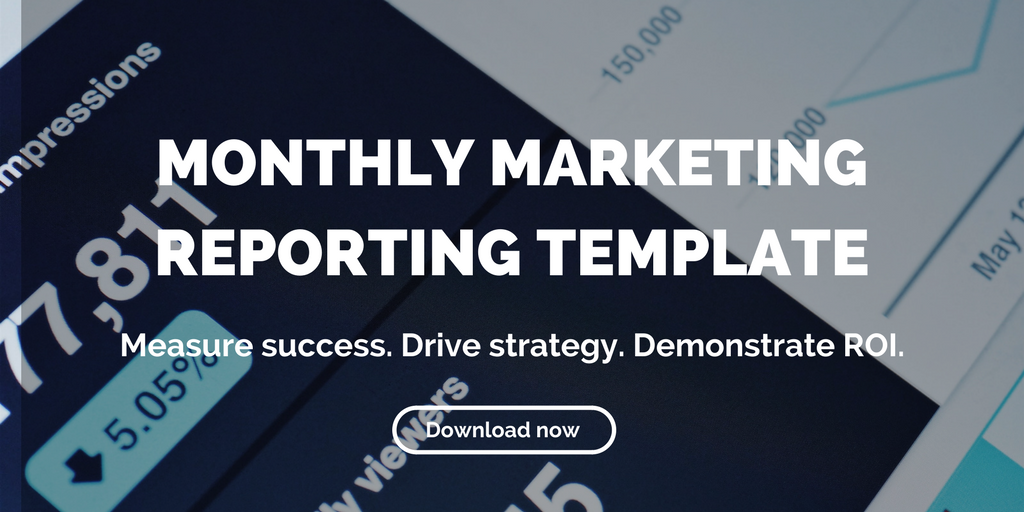Your search results for "C_HCADM_05 aktueller Test, Test VCE-Dumps für SAP Certified Technology Associate - SAP HANA Cloud Provisioning and Administration 👷 Öffnen Sie die Website ➡ www.itzert.com ️⬅️ Suchen Sie 「 C_HCADM_05 」 Kostenloser Download 👌C_HCADM_05 Online Prüfungen"

5 (More) TED Talks for Real Estate Marketers
Need some new digital marketing ideas? Check out our new favorite TED Talks for real estate marketers.
One of our most popular posts focused on the success of TED Talks for real estate marketers. As many of you know, the lecture series has published more than 100,000 talks on YouTube with over 2 billion views.
From technology and analytics to home design and child-care tips, TED Talks cover an array of topics, hence the astonishing number of views. For our real estate marketers, we’ve pulled together 5 new TED Talks since our last post to keep you inspired and create innovative ways to market your brand’s properties.
5 TED Talks for real estate marketers
1. Barbara Corcoran:Rethinking Failure
Founder of The Corcoran Group & Shark on ABC’s “Shark Tank,” Corcoran is responsible for building the largest and best-known brand in the brokerage business. In her talk, Rethinking Failure, she discusses her personal, firsthand experience of embracing failure and re-imagining what it has meant for her own path to success. This is a must–watch for any real estate marketers who are just starting out or savvy marketers looking to refresh their strategies.
2. Dan Pink: The Puzzle of Motivation
Career analyst Dan Pink examines the Puzzle of Motivation, starting with a fact that social scientists know but most managers don’t: Traditional rewards aren’t always as effective as we think. His illuminating stories will leave viewers ready to abandon old ways of motivating your marketing team and jump into innovative methods to reach your potential.
3. Ernesto Sirolli: Want to help someone? Shut up and listen!
When most well-intentioned people hear of a problem that they think they can fix, they go to work. This, Ernesto Sirolli suggests, is naïve. In this funny and impassioned talk, he proposes that the first step is to listen to the people who you’re trying to help. This lively TED Talk tells real estate marketers how to actively listen to help build their brand and, ultimately, sell properties.
4. Angela Duckworth: How Grit Can Transform Your Attitude and Real Estate Career
Looking for inspiration backed by science? Angela Duckworth’s talk on grit takes an in–depth look at what motivates people to succeed, against all odds. What Barbara Corcoran discovered through trial and error, Duckworth explains through a scientific lens.
5. Ben Miller: The Real Estate Deal that Could Change the Future of Everything
Ben Miller, co-founder of the real estate investing platform Fundrise, covers technology’s place in the world of real estate in this TED Talk. His insight into how technology will shape the future of real estate marketing will leave you contemplating the role of AI, 3D technology, and other innovative marketing solutions in your digital marketing strategy.
What TED Talks for real estate do you recommend?
Related posts:
- 5 TED Talks for Real Estate Marketers
- 4 Real Estate Marketing Trends 2018
- Top 5 Real Estate Marketing Influencers
Your search results for "C_HCADM_05 aktueller Test, Test VCE-Dumps für SAP Certified Technology Associate - SAP HANA Cloud Provisioning and Administration 👷 Öffnen Sie die Website ➡ www.itzert.com ️⬅️ Suchen Sie 「 C_HCADM_05 」 Kostenloser Download 👌C_HCADM_05 Online Prüfungen"

5 Effective Ways to Use Instagram for Your Luxury Real Estate Brand
With its highly visual platform and growing user base, Instagram is a natural fit for real estate marketing. Here are five ways to make Instagram work for your luxury real estate brand.
Highlights:
- Instagram posts should reflect your luxury real estate brand and maintain the overall tone you set through other marketing efforts.
- Successful brands on Instagram pay close attention to how their posts reflect their brand’s message.
- Hashtags allow your posts to be seen by users outside of your circle of followers, so using relevant, industry-specific hashtags is key in reaching new audiences.
Looking to engage with new audiences and connect with your target market? Instagram is the perfect platform for luxury real estate brands looking to expand their reach. In fact, engagement on Instagram is ten times higher than it is for Facebook, and the demographic is substantially more affluent—making it a no-brainer for luxury real estate.
But to get the most out of this highly visual platform, it’s important for real estate marketers to post the right kind of content. The content should reflect your brand and maintain the overall tone you set through other marketing efforts (i.e. your website, blog, etc.). Marketers who want to reap the benefits of marketing on Instagram need to do more than just post appealing pictures with fun filters. Here are five effective ways to make sure you’re getting the most out of your marketing efforts on Instagram.
5 effective ways to market your luxury real estate brand on Instagram
1. Focus on your target audience
Who are you trying to reach with your Instagram posts? Trying to post compelling content for an unidentified audience is like taking a shot in the dark. Knowing who your ideal buyer or tenant is allows you to create content that is informative, educational, and entertaining to that specific person.
When creating (or curating) content for Instagram, the more detailed you can be with your buyer persona(s), the more specific and effective your content can become. The personal connection is particularly crucial for real estate buyers, and understanding your target audience is key to making that connection.
2. Cultivate your brand message
For luxury real estate developers and property management companies, branding is key for target buyers (or tenants) to know about your properties and understand the lifestyle that the property offers. Creating consistent brand messaging that reflects the tone and voice of your marketing collateral helps audiences grow brand awareness.
Successful brands on Instagram pay close attention to how their posts reflect their brand’s message. Posts have an overarching theme that mirror the overall brand image. Images should do more than just promote your properties. They should add value to your luxury real estate brand’s unique story.
3. Use CTAs
Conversions, revenue, business, and profit—they all depend on the Call to Action. Don’t just post interesting content, give your followers a chance to do something with your posts. CTAs are key to the success of any online marketing initiative, including Instagram posts. Try adding CTAs to each of your posts to encourage audiences to “take an action”. Providing opportunities for followers to visit your website or download valuable resources will boost conversion rates.
4. Make the most of your hashtags
Hashtags allow your posts to be seen by users outside of your circle of followers, so using relevant, industry-specific hashtags is key in reaching new audiences. Hashtags automatically function as links, making your posts easily searchable and available to users looking for specific hashtags. For example, if a user interested in San Diego real estate clicks on #sdhomesforsale, all public posts labeled with that hashtag will show up.
As you start experimenting with adding hashtags to your social media posts, make sure to:
- Use relevant terms.
- Research trending topics as you chose your content.
- Create your own hashtags to match your luxury real estate brand.
- Make sure the audience setting on your posts is “public.”
5. Check your analytics
Many real estate businesses struggle with measuring ROI on social networks. Even for seasoned digital marketers, the collection of data is one of the most daunting tasks. But it’s important to gain insight into the who, when, and where of your Instagram traffic.
Use Instagram Insights to learn more about the people interacting with your luxury real estate brand on Instagram. You can also see which posts your audience sees and engages with the most, as well as a breakdown of demographics. Analyzing your posts will help determine what’s working for your brand and where changes need to be made.
Need help getting started with optimizing your digital marketing efforts? We’re here to help.
Related posts:
- 5 Real Estate Instagram Accounts You Should be Following
- Measure Social Media Success in Terms of Potential, not Dollar Amount
- How to Measure Social Media ROI with Google Analytics for Real Estate
Your search results for "C_HCADM_05 aktueller Test, Test VCE-Dumps für SAP Certified Technology Associate - SAP HANA Cloud Provisioning and Administration 👷 Öffnen Sie die Website ➡ www.itzert.com ️⬅️ Suchen Sie 「 C_HCADM_05 」 Kostenloser Download 👌C_HCADM_05 Online Prüfungen"

6 Social Media Don’ts for Property Management Companies
Committing these social media don’ts when managing a property may get you in a heap of trouble.
It’s easy to get bombarded with suggestions on how to interact with your audience on social media. In fact, social media can be particularly tricky for property managers: for example, many tenants will bash your property for all the world to see for small issues or in an attempt to get a free month of rent.
But amid the endless barrage of ideas for what to do, it’s worth remembering that not all social media engagement is equal. Just as shying away from social media isn’t a good strategy, it’s also important to remember what not to do.
Let’s look at 6 specific don’ts for keeping your proverbial foot out of your business’ mouth online:
Social media don’ts for property managers
1. Don’t assume that just because you’re online, offline rules of communication and conduct don’t apply.
It may seem obvious, but it’s all-too-often forgotten. This is a good rule, and an easy metric by which to judge any content before posting: Your interactions with current and potential tenants online should measure up to professional interactions you would have in person.
2. Don’t re-post, re-tweet, re-gram, or re-share external content without a thorough check first.
Re-posting content that’s of interest to your audience is a great way to promote discussion and engagement, especially for the highly social business of real estate marketing. But don’t get sloppy. Remember that even if content didn’t start with you, if it’s posted on your property’s social media accounts, it represents your business, and can reflect on your property and professionalism. Make sure content is well-researched and from reliable sources. Want to re-post something controversial? Just be sure to include a disclaimer or explanation in your post.
3. Don’t forget that emotional intelligence is just as important for businesses as for individuals.
This one is especially key for real estate marketers, since real estate decisions are so personal. Never forget that behind every social media account is a human being. The bottom line: “Bring emotional intelligence to your social media management. Take the time to address any issues with compassion and understanding.”
4. Don’t ignore comments.
Social media is all about engagement with your audience. Yes, responding to every comment takes time and resources, but it is well worth the effort. A comment ignored sends the message that you don’t feel that your reader’s question, concern, or observation is important. Use comments as the opportunity they are to interact with your followers, and show them that you are ready and willing to address any issues they may have.
5. Don’t delete negative comments.
Another cardinal sin for real estate. Once it’s online, trust that people have seen it. Deleting a complaint will only make your business appear insensitive and evasive. Addressing negative comments demonstrates that your company is proactive about resolving issues and taking care of your tenants.
6. Don’t forget the basic principles of common sense and good judgment.
This one comes from John P. David of David PR Group. It seems like another obvious one, but people and businesses violate this principle all the time. Always have at least two pairs of eyes on everything you are going to post, and anything remotely controversial should be thoroughly vetted by as many people as necessary. When in doubt, David says, don’t post.
If your company has committed any of these social media don’ts in the past, don’t panic. These platforms offer an ideal place for renewing and tweaking your image. Invest in the creation of a good social media policy. Don’t give the enormously important task of social media management to a summer intern. And, for goodness’ sakes, remember you’re a human talking to other humans.
Related posts:
-
Social Media Can Be a Strategic Weapon in Real Estate Marketing
-
4 Tools for Determining the Best Time to Post on Social Media for Your Property
-
4 Steps to Building a Successful DIY Content Marketing Strategy for Real Estate
Your search results for "C_HCADM_05 aktueller Test, Test VCE-Dumps für SAP Certified Technology Associate - SAP HANA Cloud Provisioning and Administration 👷 Öffnen Sie die Website ➡ www.itzert.com ️⬅️ Suchen Sie 「 C_HCADM_05 」 Kostenloser Download 👌C_HCADM_05 Online Prüfungen"

3 Tips for Marketing to Millennial Real Estate Buyers
Home buyers are getting younger. Is your marketing strategy ready to meet the needs of millennial real estate buyers?
Consider this: more than a third of all home buyers came of age in the digital age. That’s right—millennials, those aged 36 and younger, now make up 34% of home buyers, which is the largest chunk of any generation buying homes right now.
These digital natives have a buying process that’s completely foreign to older generations, which means “traditional” marketing tactics won’t cut it when it comes to appealing to this demographic. Adjusting your strategy to resonate with millennials makes sense not just because it helps you reach this segment of the market, but also because it keeps you better positioned for the future of real estate marketing.
These three tips will help you adjust your strategy to market to millennial real estate buyers.
1) Be ready to guide them through the process
Millennials get a lot of bad press, as a generation that requires constant coddling and hand-holding. But to be fair, these young home-buyers are new to purchasing real estate—the vast majority (66%) of buyers ages 36 and under are first time home-buyers.
Buying a home is a complicated process, and millennials are looking for agents who will take the time to help guide them through the process. What does this mean for your marketing strategy? Placester’s Carolyn Berk suggests that “because guidance is so important to millennials, your marketing should emphasize your dedication to assisting customers every step of the way.”
This means offering resources and strategies rather than simply promoting available properties. For example, an eBook that guides first-time home buyers through the process is a great way to demonstrate your knowledge and commitment to supporting your clients through the buyer’s journey.
2) Help millennial real estate buyers save money
More than previous generations, millennials are saddled with student loan debt and often rely on sources other than just savings to finance their down payments. Simply put, they are looking to save at every opportunity.
Once again, content is your best bet for demonstrating to millennial real estate buyers that you are there to help them save money. Blog posts, testimonials, and case studies should detail your expertise in getting your clients the best possible deal. “Small things, like helping with contract negotiations or mortgage lender references, can go a long way with millennial buyers,” says Berk.
3) Go digital
This one probably seems obvious, but you’d be surprised at how many real estate professionals neglect their digital marketing presence. From social media to your website, marketing online is no longer optional, it’s expected. Millennial real estate buyers are heavily using the internet during their search and buying process, and your marketing strategy needs to be ready to meet them online.
First off, your SEO (search engine optimization) is key—your content needs to be readily available to potential buyers entering relevant search queries. “Aligning the content in your website to keywords that millennials use to search for homes in your region will help you pop up in search listings,” suggests Berk.
Your social media presence is also important. Millennials are checking Facebook, Twitter, Instagram, and Snapchat frequently throughout the day, and they should be finding your content. Take advantage of these visual media to promote your properties with photo and video content.
Marketing to millennial real estate buyers makes sense for your overall marketing strategy and helps keep your brand relevant and ready to adapt to the future.
Related posts:
- 5 Tips for Building a Successful Real Estate Social Media Marketing Program
- Real Estate Firm Grows Sales by 300% through Content Marketing
- Must-Know Social Media Strategies for Real Estate
Your search results for "C_HCADM_05 aktueller Test, Test VCE-Dumps für SAP Certified Technology Associate - SAP HANA Cloud Provisioning and Administration 👷 Öffnen Sie die Website ➡ www.itzert.com ️⬅️ Suchen Sie 「 C_HCADM_05 」 Kostenloser Download 👌C_HCADM_05 Online Prüfungen"

6 Tips for Creating Mobile-Friendly Marketing Emails
The majority of your prospective buyers and tenants are reading emails on their phones, so you’d better be sending mobile-friendly marketing emails.
My mornings are probably much like most of yours: As soon as my sleepy fingers can silence my alarm on my cell phone, I open up my email, before my feet even hit the floor. I will check my email again while I’m eating breakfast — and possibly a third time while I’m in line waiting for my coffee.
With the explosion of smartphones, more and more people are taking to their phones over their desktop computers to check email. It’s not hard to understand why; our phones are with us all day long. In fact, 54% of emails are now being read on a mobile device, a 40% increase in the last five years.
When a majority of your audience is reading your marketing emails on their mobile devices, it’s imperative that you’re creating emails that are optimized for mobile viewing.
Here are 6 essential tips for creating mobile-friendly marketing email campaigns.
1) Keep them short and sweet.
When writing copy or email, your content should be to the point. But this is especially true for mobile-friendly emails. Small screen size and increased likelihood the user is multi-tasking are just two reasons why efficiency is key.
Create messages that are easy for the eye to scan. Use bullet points or short paragraphs to keep the reader engaged. Strip out anything that’s not totally necessary, and drive recipients to landing pages for more information.
2) Less is more.
Not all mobile devices include your images. Android users, for example, will find their email images are off by default unless they change their settings. It’s also important to remember that large image files take longer to download. And nothing drives people away like slow load times.
What does this mean for mobile-friendly emails? Your content needs to be front and center, with less reliance on images. This can be tricky for real estate marketing, where the visual is key. But if your content is snappy and intriguing, readers will follow their curiosity and peruse images you link to.
3) Get to the point.
A typical desktop inbox displays about 60 characters of a subject line, while mobile devices show just 25-30 characters. Mobile-friendly emails place the offer or call-to-action at the beginning of the subject line where it’s more likely to be seen.
4) Get responsive.
We’ve all opened an email or webpage on a mobile device and had to squint to read it. Web content designed for desktop screens are barely legible when shrunk down to this size.
Try using a responsive template to ensure that readers are viewing your email the way you intended. Responsive emails use fluid tables and images to make content flow across different screen sizes.
5) Button it up.
I know it’s not just me and my fat fingers: Links are difficult to click on mobile devices! Instead try using buttons for your calls-to-action.
Make sure any CTA buttons are toward the top of your email, so readers know what you want them to do right away. Also, buttons should be large in size and surrounded by plenty of white space so readers don’t accidentally click on something else.
6) Test your work.
After making your emails as mobile-friendly as possible, don’t forget the most important step: testing. Send out test emails to your coworkers that use different devices to ensure that your emails look exactly like you want. With 98.4% of users reading email on Android and iOS, those operating systems should be your main focus.
Don’t lose readers before they’ve had a chance to open, read, and engage with your emails. Use these 6 tips for more mobile-friendly emails to help improve engagement rates, lead conversion, and profitable investor action.
Related posts:




